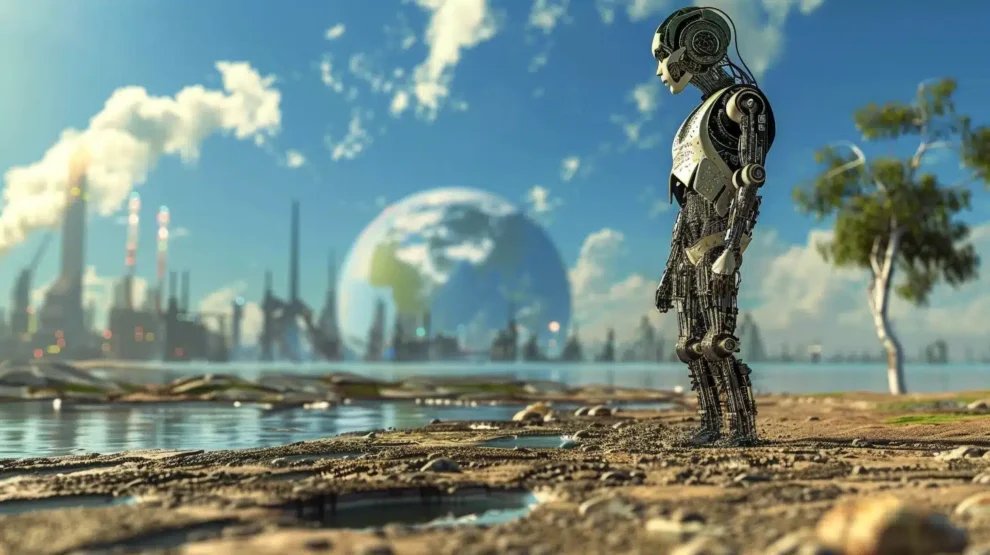In an era where data reigns supreme, Artificial Intelligence (AI) is making groundbreaking strides, transforming various fields. One domain experiencing a profound AI-led revolution is meteorology. AI is reshaping how we predict weather, understand climate patterns, and mitigate the impacts of severe weather events.
This comprehensive exploration delves into the multifaceted ways AI is revolutionizing meteorology. We will explore AI’s role in enhancing weather forecasting accuracy, enabling more precise and timely predictions, and even venturing into the realm of climate modeling, providing critical insights into the future of our planet.
AI’s Arsenal in Meteorology: Key Applications
- Enhanced Weather Forecasting Accuracy
- AI algorithms can process real-time data from various sources, including satellites, weather stations, and radar, to create more accurate and localized forecasts.
- Machine learning models can learn from historical weather patterns to identify subtle trends and improve the prediction of severe weather events, such as hurricanes, tornadoes, and floods.
- Nowcasting: Predicting the Immediate Future
- AI is revolutionizing nowcasting, the prediction of weather events in the short term, typically up to six hours.
- By analyzing real-time data from radar and other sources, AI algorithms can identify developing weather patterns and provide timely warnings for localized events like thunderstorms, heavy rainfall, and flash floods.
- Climate Modeling and Prediction
- AI’s computational power is being harnessed to create more sophisticated climate models that can simulate the complex interactions of the Earth’s atmosphere, oceans, and land.
- These models provide crucial insights into future climate trends, helping us understand the potential impacts of climate change and develop strategies for mitigation and adaptation.
- Extreme Weather Event Prediction
- AI algorithms can analyze historical data and identify patterns that precede extreme weather events, such as heatwaves, droughts, and wildfires.
- By providing early warnings, AI can help communities prepare for and mitigate the impacts of these events, saving lives and reducing economic losses.
- Data Assimilation and Quality Control
- AI is being used to improve the accuracy and reliability of meteorological data by identifying and correcting errors, filling in gaps, and assimilating data from various sources into a coherent picture.
- This ensures that weather forecasting and climate models are based on the most accurate and up-to-date information available.
- Optimizing Resource Allocation
- AI can help meteorological organizations optimize the allocation of resources, such as personnel, equipment, and computing power, based on real-time weather conditions and forecasts.
- This ensures that resources are deployed where they are most needed, improving the efficiency and effectiveness of weather forecasting and response efforts.
The Human-AI Partnership in Meteorology
While AI is revolutionizing meteorology, it is essential to recognize that it is not a replacement for human expertise. Meteorologists play a crucial role in interpreting AI-generated forecasts, making informed decisions, and communicating weather information to the public. The most effective approach is a collaborative one, where AI and human meteorologists work together to harness the strengths of both.
Personal Experiences: Witnessing the AI Transformation
In my own experience as a science writer, I’ve had the privilege of interviewing meteorologists and AI researchers who are at the forefront of this exciting field. I’ve witnessed firsthand how AI is transforming the way they work, enabling them to make more accurate predictions, provide more timely warnings, and gain a deeper understanding of the complex dynamics of the Earth’s atmosphere.
One meteorologist I spoke with described how AI has enabled him to predict the track of a hurricane with unprecedented accuracy, saving countless lives by providing early warnings to coastal communities. Another researcher shared how AI is helping her develop more sophisticated climate models that can simulate the potential impacts of climate change, informing policymakers and guiding efforts to mitigate its effects.
Challenges and Opportunities
While the integration of AI into meteorology offers immense promise, it is not without challenges. One significant hurdle is the need for vast amounts of high-quality data to train AI algorithms. Ensuring the accuracy and reliability of these data is crucial for producing reliable forecasts and models. Additionally, there is a need for continued research and development to refine AI algorithms and address potential biases that may emerge.
Despite these challenges, the opportunities presented by AI in meteorology are vast. As AI technology continues to advance, we can expect even more significant breakthroughs in weather forecasting, climate modeling, and our understanding of the Earth’s atmosphere.
The integration of AI into meteorology is ushering in a new era of weather forecasting and climate modeling. By harnessing the power of AI, we can achieve more accurate predictions, provide more timely warnings, and gain a deeper understanding of the complex dynamics of the Earth’s atmosphere. This knowledge empowers us to make informed decisions, mitigate the impacts of severe weather events, and build a more resilient future in the face of climate change.



















Add Comment